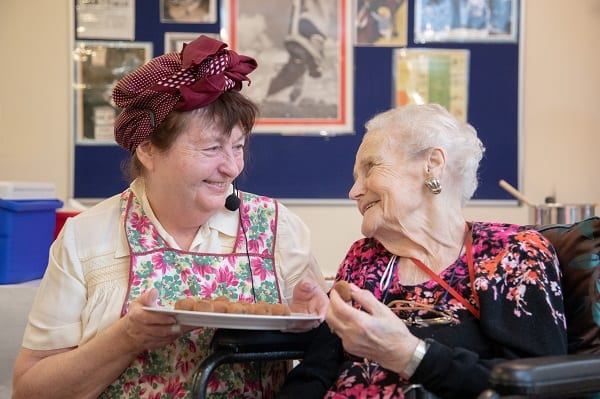As the UK prepares for the uncertainty of Brexit, Bidfood, one of the UK’s leading
foodservice providers, has revealed its latest research highlighting that the UK public needs to change their ways when it comes to food waste. The findings, that surveyed over 1,000 participants, revealed the shocking results that health conscious millennials are in fact the main culprits for creating food waste and not being sustainable. According to research, 44% of millennials throw out food from their kitchen once a month, and 28% throw away fruit and vegetables the most. It’s not just millennials that are guilty of food waste though, 63% of 35 – 44-year olds surveyed were also found to be dishing out unnecessarily large portions, which as a result meant throwing away perfectly good food. In a bid to find a solution to the UK’s sustainability crisis, Bidfood has worked with an MHA care home in Hitchin to learn from the older generation about how they made the most out of the few ingredients they had during the post-World War II rationing period. When speaking with the residents, they discussed how portion sizes are far larger now than they were 50/60 years ago, and that there is a real lack of knowledge on best before and use by dates, that seems to be an issue particularly for the younger generations. At the residential home, food historian and cook, Monica Askay, provided residents with treats created from leftovers and minimal ingredients including: bread pudding, mock apricot flan using shredded carrot and chocolate truffles with a very secret ingredient - mash potato instead of flour! Monica showcased how a typical menu from the 1940’s – 50’s rationing era would have been prepared using leftovers and minimal ingredients. This would look similar to the menu below:
- Breakfast ‘Wheatmealies’ (small dice of stale bread baked in the oven till crisp), served with milk and stewed apple
- Main Meal
- Woolton pie (seasonal root vegetables in a white sauce thickened with oats and flavoured with marmite) served with carrots and cabbage
- Mock apricot flan with mock cream
- Supper
- Split pea soup
- Raw winter salad
- Bread pudding
Monica Askay, Food Historian, commented: “Bidfood’s research is really important as it highlights the need for consumers to think more about sustainability when it comes to issues such as food waste and packaging. There is a widespread misunderstanding surrounding the food labels of ‘Use By’, ‘Best Before,’ and ‘Display Until’ dates. The latter applies to fruit and vegetables and is more for the benefit of the supermarkets and their stock rotation systems. It is not a food safety issue, though obviously fruit and vegetables which have gone mouldy should be discarded.”
Askay added: “Older age groups are less concerned with issues around packaging. The fact that they waste less food reflects both their cookery knowledge and the fact that they, and their parents, lived through a time of ingredients limited both in quantity and range. The WW2 and post-war rationing periods were a very creative time, encouraging people to find ways to make the most of the limited ingredients available.”
Heather Angus, HR & Sustainability Director at Bidfood, commented: “We can learn a lot from those who lived during the rationing period to help us become more sustainable and environmentally conscious. It’s tremendously important that during a time where worries over the planet are increasing, that everyone does whatever they can – whether it’s big or as little as changing portion sizes and using leftovers – in order to prevent further damage.”
